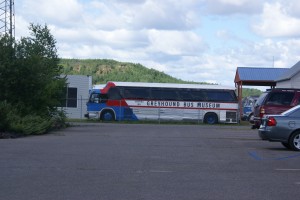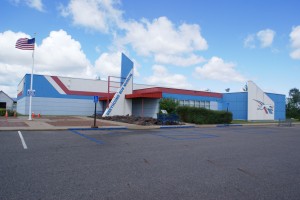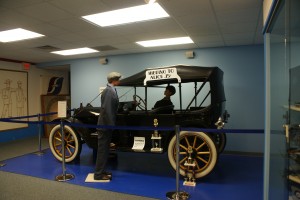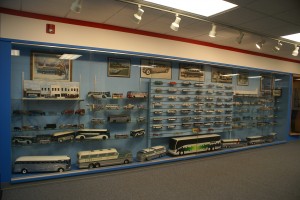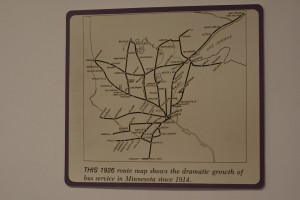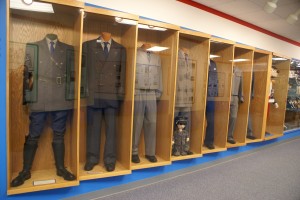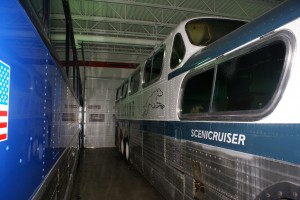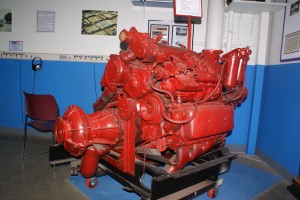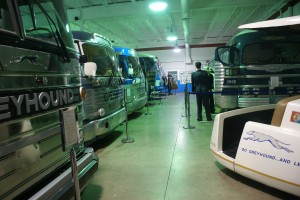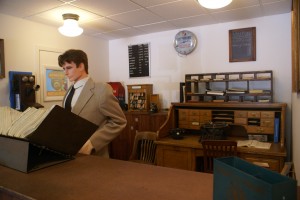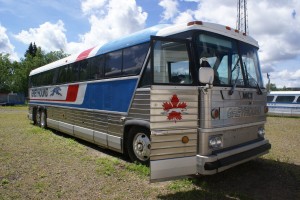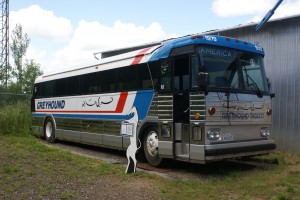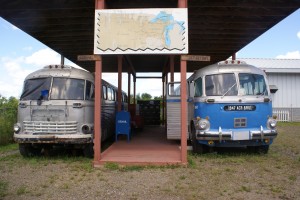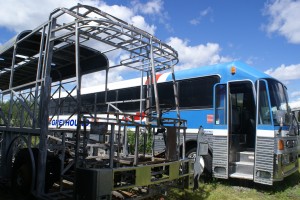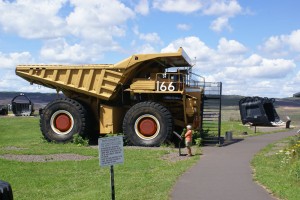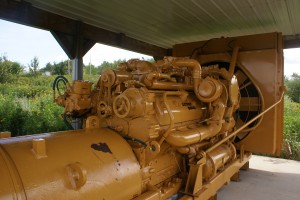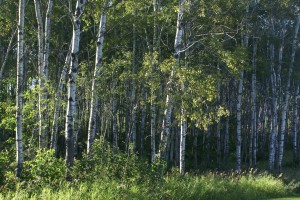It seems there is less to blog about when we are at the house, or perhaps there’s just less time to do it. It’s not that we are less busy; it’s just that what we are doing seems potentially less interesting. Besides the usual chores that go with owning a house, I spent the last week dealing with our pull-through driveway, ham radio stuff, and a serious e-mail problem.
By Wednesday the 20th it had become clear to me that we were not getting replies to e-mails we had sent out; not a couple of e-mails to a couple of people, but lots of e-mails to lots of people. Most of these were e-mails to people who normally reply in a timely manner, and they were e-mails seeking information or continuing a conversation, and thus replies were expected. I started making phone calls and sure enough our e-mails had been received and replied to. We never got the replies, and the senders never got bounce-backs; the e-mails just vanished into cyberspace. In one case I sent a single e-mail to two recipients, both of whom had gmail accounts. They both replied. I got one reply and not the other. We also had a couple of folks send us e-mails while we were on the phone with them, but those e-mails never arrived. Not good.
I opened a support ticket with our hosting service and spent the last week trying to communicate with their off-shore technical support people. I don’t have prejudice towards off-shore support, but in this case they turned out to be neither sufficiently technical nor supportive. Every time I updated the support ticket I got a reply from a different person. I explained repeatedly and in considerable detail the difficulties we were having and they repeatedly sent replies apologizing for the inconvenience, asking me to send them information I did not have, performing simple but irrelevant tests of our e-mail accounts, and then informing me that everything appeared to be working fine. Arrrgh. As of this post the problem persists and I have lost any hope of it being resolved. I hope to accomplish this with minimal downtime or disruption of service. Our apologies to anyone who was affected by this; we have not been ignoring you and we now know that you have not been ignoring us. We will be moving our domain to a new registrar/hosting service at the end of this month.
We have a tower that sits at the east end of the house. It was already installed when we bought the house, and I estimate its height at about 38 feet; not that tall by ham radio standards, but tall enough to treat with respect if you are going to climb it. It’s an older design and has obviously been there for a while. It has an over-the-air (OTA) TV antenna on a rotor at the top. The rotor is not connected to a controller and the coax is not connected to anything inside the house. There is also a Direct TV satellite dish (single LNB). The cables from that are also not connected to anything in the house. The previous owners left the SAT-TV receiver behind, but it is obsolete. The base of the tower is set in concrete but the tower was not secured anywhere else. On Friday we rigged up a couple of support arms and attached them to the side of the house in anticipation of climbing the tower on Saturday to remove the old antennas and install our 2m/70cm ham radio vertical antenna.
On Saturday we went to our ham radio club (SLAARC) breakfast in South Lyon. It’s always good to visit with this group. Many hams are tech savvy about a lot of things besides amateur radio so I got to bounce our e-mail problem off one of them. Thanks Larry (K8UT). After breakfast Linda and I went to Mike’s (W8XH) QTH (location) to look at his ham radio tower as we are trying to figure out what to do for base station antennas. He has a Heights Tower with a motorized fold-over base. It is a very nice all-aluminum tower and a very nice installation. Nice antennas, too, but that’s another story.
Mike then came to our house and brought his professional grade climbing harness. We got it adjusted to fit me and I climbed up as far as the roof, probably 10 feet off the ground. (Our tower is only an inch from the gutter.) As I started up the tower from the roof, the tower had more movement than I was comfortable with, so we abandoned the climb. I removed the old Direct TV antenna, which was at my shoulder level when standing on the roof, and installed our dual band VHF/UHF (2m/70cm) vertical ham radio antenna at the same height. The dual-band is lower than I wanted and very close to one of the tower verticals, but it was the best we good do at the moment. We routed the coax to the back deck, connected it to our Icom 7000 go box, and started looking for 2m and 70cm repeaters. We were able to activate the K8VJ 2m repeater in South Lyon without difficulty, as well as the Livingston County LARK 2m primary repeater. We were also able to talk to two guys on the Clarkston 2m repeater, which, according to the ARRL repeater directory that Mike installed on his smartphone, was over 22 miles away to the northeast. Not bad for 2m on 50 watts with a less than ideal antenna location. We tried a number of other repeaters but were not able to raise them.
While we were out taking care of ham radio business during the morning, Phil (our pull-through driveway contractor) brought a large load of sand (silt, technically) to the house, pulled the top 6 inches of 21AA road gravel out of the new pull-through drive, and mixed in the sand as he put it back. As I noted in a previous blog, our bus got stuck in the driveway a couple of weeks ago and had to be winched out. The problem turned out to be an inadequate amount of “crusher dust” in the 21AA road gravel. Without a sufficient amount of fine particles, the larger stones don’t bind together and pack to make a hard surface that resists blowout and further compaction.
Mike spent the rest of the day at our house helping us with some computer issues. He is a retired HP tech and now has an active business of his own working on personal and business computer systems and networks. By the time we were done it was dinner time, so we treated him to dinner at Olga’s in Brighton. Thanks Mike.
Sunday is our day to go to the Howell Farmers Market. The fruits and vegetables are now plentiful and we picked up an assortment of yummy things. We also got some pointers from Marjorie about apples and pears as we had discovered just a couple days earlier that we have an apple tree and a pear tree, both of which are laden with fruit.
On Sunday afternoon I used our Honda Element to “roll” the pull-though driveway. The car only has about 1,000 pounds on each tire, so it is in no way equivalent to driving the bus, which has 7,000 lbs on each of the front/steer tires, 5,000 lbs on each of the four drive tires, and 3,750 lbs on each of the two tag axle tires. Still, the car did a nice job of compacting the surface. Phil had suggested that I carefully pull one of the front tires of the bus onto the pull-through driveway, but even after rolling it with the car I was nervous that it wasn’t locked together quite as much as it needed to be. I had also heard from Ed & Betty Burns that they would be arriving on Wednesday in their Tiffin Phaeton, so I was anxious to make sure the driveway would support their motorhome. I discussed it with Phil Sunday evening and he said he had a plan and would check in the morning to make sure it was going to work. He was confident, however, that Ed & Betty would not encounter any driveway difficulties.
Monday saw us in west Dearborn for our summer dental checkups. One of my old fillings was starting to separate from what remained of the tooth, and I was informed that it was time to get a crown. They had a 9 AM appointment slot available the next day, so I signed up. Dental work doesn’t bother me the way it does some people. The sooner it’s fixed the better.
Jim and Kristine Gullen came over for dinner on Monday, the first time they have been to the new house. Linda made a mushroom risotto using Farro, a wonderful, ancient, high-protein Italian grain that is earthy, slightly nutty, and has great “chew”. She used mushroom “broth” instead of stock, of course, but that just added to the earthiness of the dish. She served the risotto with a side of mixed green and “long” beans lightly sautéed in olive oil. We got the long beans from an Asian vendor at the Howell Farmers Market who told us they are usually stir-fried. How long are they?; about 2 feet, on average. They taste like green beans although subtly different. Linda also made vegan chocolate cake that was excellent and served it with fresh strawberries. Jim and Kristine brought a couple bottles of wine and we had a wonderful visit over a lovely meal.
Phil came back late Monday afternoon and added some more sand to the edges of the pull-through driveway and also to where it ties in to the concrete driveway. He had borrowed a compactor device that mounts on the arm of his backhoe and used that to compact the driveway. I don’t know about Linda, Jim, or Kristine, but the sound of Phi’s equipment working was music to my ears. The song was “Our bus ain’t gonna sink no more.”
